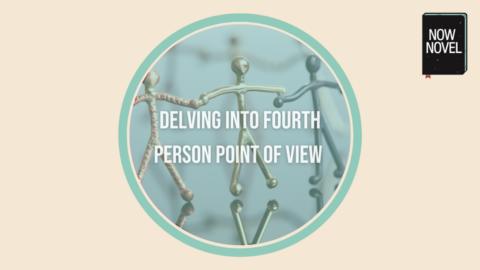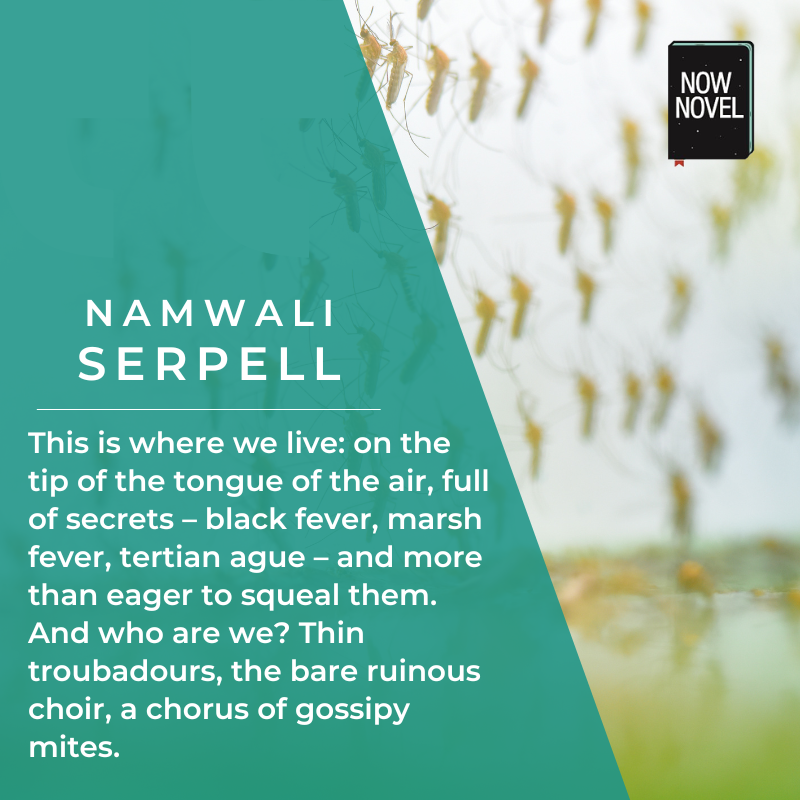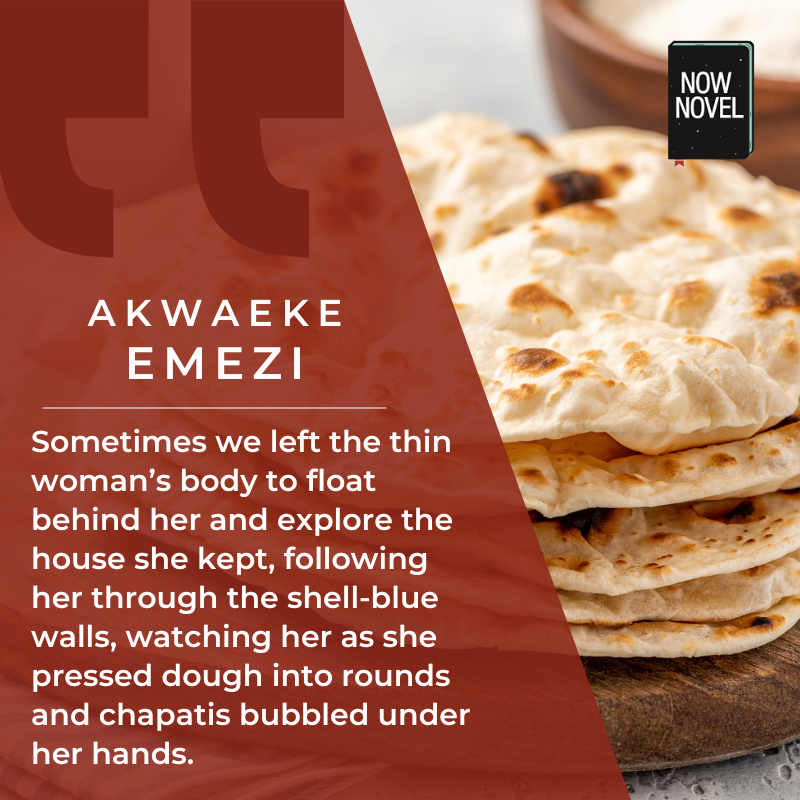‘Whenever we saw Mrs. Lisbon we looked in vain for some sign of the beauty that must have once been hers. But the plump arms, the brutally cut steel-wool hair, and the librarian’s glasses foiled us every time.’
These lines are from the opening chapter of The Virgin Suicides by Jeffrey Eugenides and are an example of the fourth point of view. The fourth person point of view (POV) is a recently recognised distinct point of view.
Defining fourth person point of view
There are two types of this POV, the collective and the indefinite.
The collective is told from a perspective of a collective, telling the story through the pronouns ‘we’ and ‘us’.
The indefinite uses uses the indefinite pronouns such as ‘one’ ‘someone’ and ‘anybody’. This would be used in a story, for example a sentence, ‘One doesn’t like to go around talking ill of the dead, but …’. Or, to refer to something done habitually by people, ‘Anybody can ring the bell here.’
It is also worth noting that some people argue that fourth POV is simply collective first person POV.
Let’s explore this highly unusual way of narrating a story.
Firstly, point of view (POV) refers to the perspective from which a story is narrated. It determines through whose eyes the reader experiences the story and how much information is available to them about the characters, events and settings. This has a huge bearing on how readers engage with a story and perceive the plot and characters in a story.
Most stories use the first person POV, a story told from the viewpoint of one character, using the pronouns ‘I’, ‘me’, ‘mine’ and so on, as well as third person POV, ‘she, her, him’, and so on. Less common is the second person POV using ‘you’, addressed either to someone, or replacing a sentence such as ‘I walk down the street. I’m thinking of booking a trip to Bangkok’ with, ‘You walk down the street. You’re thinking of booking a trip to Bangkok’, as one example. Here is a comprehensive look at POV and tips to using different point of views.
But far less common is fourth POV, although you may have encountered in books you’ve read. Simply put the fourth POV isn’t as straightforward as the other perspectives. It often refers to a collective or universal perspective, encompassing broader groups or even the human experience as a whole. Unlike the third person, which focuses on specific characters, the fourth person can reflect on a more general sense of humanity or an overarching ‘we’.
It’s important to note that there is no singular in fourth POV is, the collective tales the tale, whatever that collective is. It can be a group of people, or a bunch of flowers or a pride of lionesses, or swarm of bees, anything that has a consciousness in your story. As such this POV can be extremely useful to tell a different kind of story, to show how a group responds to situations or events.
The fourth POV isn’t as straightforward as the other perspectives. It often refers to a collective or universal perspective, encompassing broader groups or even the human experience as a whole.
Tweet This
Examples from fiction
This perspective is seen in The Virgin Suicides, as noted above, with a collective group, an anonymous group of teenage boys telling the story of the ‘virgin suicides’ of five teenage doomed sisters, the Lisbon girls. Through it they tell the story and try to figure out what happened. There is no singular narrator – and the book was a bestseller, as well as a finely made movie by Sofia Coppola, so there is certainly room for scope in telling a story this way. And might be worth considering – depending on the story you want to tell, of course.
Another example is found in Ayn Rand’s Anthem, published in 1938, a dystopian novel in which human beings are not allowed to have personal identities and refer to themselves as ‘we’. In this case the single narrator has to use ‘we’ to refer to himself, and is an unusual way of using this POV.
It opens with the lines:
It is a sin to write this. It is a sin to think words no others think and to put them down upon a paper no others are to see. … And we know well that there is no transgression blacker than to do or think alone. We have broken the laws. …
Our name is Equality 7-2521, as it is written on the iron bracelet which all men wear on their left wrists with their names upon it. We are twenty-one years old.
As the novel progresses, however, ‘we’ becomes ‘I’ as the narrator gains a spark of individuality.
In The Old Drift Namwali Serpell writes her story from a multitude of points of view, including that of a group of mosquitoes, another use of the fourth POV. They serve as a sort of Greek chorus to the action, a story of three families in Zambia: one Zambian, one Italian, and one Indian. The chorus is delineated in the text by the use of italics at the beginning of the various section. Serpell also, incidentally, uses both first and third person to tell this story.
Here’s a taste of the mosquitoes’ voice:
This is where we live: on the tip of the tongue of the air, full of secrets – black fever, marsh fever, tertian ague – and more than eager to squeal them.
And who are we? Thin troubadours, the bare ruinous choir, a chorus of gossipy mites. Uncanny the singing that comes from certain husks. Neither gods nor ghosts nor spirits nor sprites, we’re the effect of an elementary principle: with enough time, a swarm will evolve a conscience. Thus we’ve woven a worldly wily web, contrived a hive mind, if you will. Spindle bodies strung in a net of spacetime. Interested. Hmming along.
… A swarm is but a loose net of knots. We hang, an elastic severalty. Our song is the same: the notes we sing, like a plaintive erhu, form a weird and coordinate harmony.
Meanwhile, Quan Barry’s We Ride Upon Sticks already has the fourth POV in its title. This novel Set in the coastal town of Danvers, Massachusetts (which in 1692 was Salem Village, site of the origins of the Salem Witch Trials), the story follows the Danvers High field hockey team as they discover that the dark impulses of their Salem forebears may be the key to a winning season.
Here’s an example of a few lines: ‘Newly defeated, we spit out our mouth guards and ripped off our cleats, untaped our wrists. In twos and threes, we slugged back to the dorms through the late-afternoon air, the White Mountains’ humidity like dog stew.’
A final example comes from Freshwater by Akwaeke Emezi.
This novel is centered on a young Nigerian woman, Ada, who develops separate selves within her as a result of being born ‘with one foot on the other side’. It’s narrated by the various selves within Ada.
It begins:
We
The first time our mother came for us, we screamed.
We were three and she was a snake, coiled up on the tile in the bathroom, waiting. But we had spent the last few years believing our body—thinking that our mother was someone different, a thin human with rouged cheekbones and large bottle-end glasses. And so we screamed. The demarcations are not that clear when you’re new. There was a time before we had a body, when it was still building itself cell by cell inside the thin woman, meticulously producing organs, making systems. We used to flit in and out to see how the fetus was doing, whistling through the water it floated in and harmonizing with the songs the thin woman sang, Catholic hymns from her family, their bodies stored as ashes in the walls of a cathedral in Kuala Lumpur. It amused us to distort the chanting rhythm of the music, to twist it around the fetus till it kicked in glee. Sometimes we left the thin woman’s body to float behind her and explore the house she kept, following her through the shell-blue walls, watching her as she pressed dough into rounds and chapatis bubbled under her hands.
As we can see, the fourth POV can be an extremely powerful tool when used in service of a story’s theme and plot. With Emezi’s novel, it is a device to narrate split selves, while Serpell uses a Greek chorus method of storytelling, two unique ways of using this device.
You can also play around with it – you could use fourth person limited or omniscient – as you would do with third POV.
As with any POV there are advantages and disadvantages of using this one.
Advantages
If you’re writing a story from a collective point of view, this seems like a no-brainer. Rather than hopping around from narrator to narrator, you can use the collective to tell the story, and it would flow better. Your reader won’t have to do the mental gymnastics, and can easily follow your one collective narrator.
You can explore complex character dynamics and social interactions within the group. You can highlight the tension between individual desires and group expectations, as well as the varying degrees of conformity and dissent. This allows you to reveal the nuances of group behavior, such as peer pressure, collective decision-making, and the impact of individual actions on the group. It’s a great way to explore themes of identity, belonging, and social cohesion.
It’s certainly different! If you have never tried this before, it will stretch your creative muscles, might serve as inspiration for other stories, and you will be creating something quite unique. You never know where this might lead you in your story or writing-wise.
Disadvantages
Bottom-line: readers aren’t used to this POV. They may initially struggle with identifying with the narrator or feeling any empathy or sympathy with them. That said, done skilfully, and with a cracker plot, you might have them interested and intrigued, and it can be done successfully, as we have seen from the examples above.
This can be quite a ‘detached’ point of view. You may be describing events as a fly on the wall, so to speak, and it can be hard to drill down into each characters’ motivations, or reveal distinctive features of characters within the group. Again, some considerable skill is going to be needed here.
The collective ‘we’ perspective can sometimes create ambiguity and confusion for readers. It may be unclear who exactly is included in the ‘we’ especially if the group is large or changes over time. Maintaining a coherent and engaging narrative while balancing the collective and individual elements can be complex.
Tips
Read widely in fourth POV to get a sense of how it works. Although not as common as other POVs there are books that have been written using it, so get a real sense of it.
Try writing a chapter in this point of view to see if you’re comfortable with it, or could write in it. As an exercise write the same chapter in third person, and see what is better.
Write a short story in this POV to get a real feel for it, and whether you want to commit to a novel or longer work using it.
Want to master all points of view and get coaching while doing so? Enrol for our Group Coaching program and get personalized guidance.



